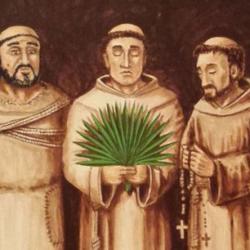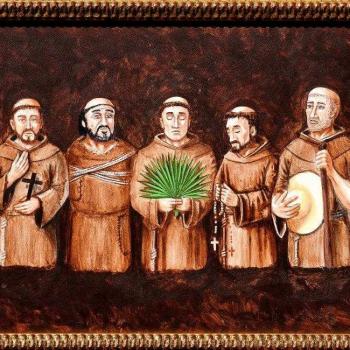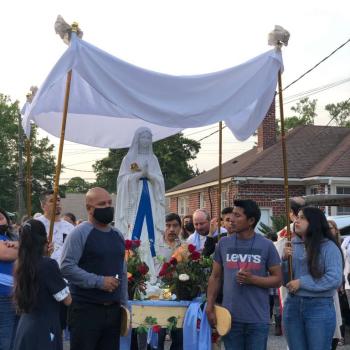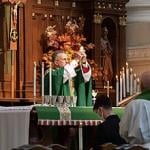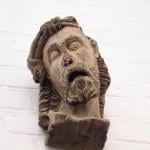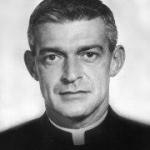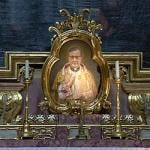As 2015 comes to an end and I begin to consider some of the most significant moments of the year, the beatification of Archbishop Oscar Romero quickly emerges in my mind as one of the most significant events I took part of in 2015. After a quick visit to Guatemala and El Salvador three years ago, a fellow priest and I made a promise that we would attend the beatification of Archbishop Romero whenever and wherever it happened. We were both shocked that the day arrived so quickly. Though not all in El Salvador rejoiced at the beatification of a man whom the Salvadorian people had already canonized, there was an exhilarating atmosphere throughout the country as the Church beatified a man whom locals had called “San Romero de America” for some time. I share with you now my reflections about Blessed Oscar Romero, a courageous man who gave up his life for the sake of the Gospel.
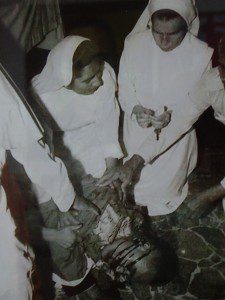
In 1977, San Salvador cautiously welcomed a new archbishop, Oscar Arnulfo Romero. Three years later, the archbishop was killed by a single bullet shot from the backseat of a car parked outside the chapel where he was celebrating Mass. Thirty-five years later, the same man was declared a martyr by Pope Francis and was beatified in San Salvador on May 23rd, 2015 at a ceremony attended by about half a million faithful, including 100 bishops and 1400 concelebrating priests.
For the Church to declare a martyr, evidence must surface that the person was killed out of hatred for the faith. The person carrying out the execution must have been motivated directly out of a disregard for the Gospel, not political, personal or any other reason. For years Romero’s case was carefully studied in Rome due to accusations that the Archbishop had been killed for political reasons and not out of hatred for the faith. The case was eventually blocked until Pope Benedict XVI ordered the case reopened. While in Brazil in 2007, Benedict described Archbishop Romero as a “great witness of the faith, a man of great Christian virtue who worked for peace and against the dictatorship and was assassinated while celebrating Mass.” Benedict accurately identified the reason why the case remained blocked for so many years by stating, “the problem was that a political party wrongly wished to use him as their badge; as an emblematic figure.” Rome feared that the modern remnant of once leftist guerrillas would feel vindicated by Romero’s beatification. Benedict concluded, “Romero merits beatification, I do not doubt.”
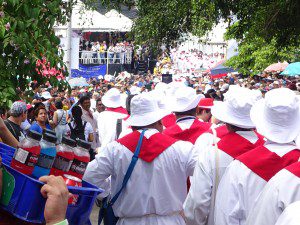
Romero’s enemies accused him of ascribing to liberation theology, yet the liberation Romero preached is the freedom enjoyed by the children of God, “a liberation that has, above all else, respect for the dignity of the person, hope for humanity’s common good, and the transcendence that looks before all to God and only from God derives its hope and its strength.” He was killed by fellow Catholics who did not want to be challenged by the Gospel and preferred to silence him. They may have silenced him, but his prophetic voice has persevered and Blessed Romero, in the words of Saint John Paul II, now “belongs to the Church.” John Paul II described him as “a zealous and venerated pastor who tried to stop violence. I ask that his memory be always respected, and let no ideological interest try to distort his sacrifice as a pastor given over to his flock.”
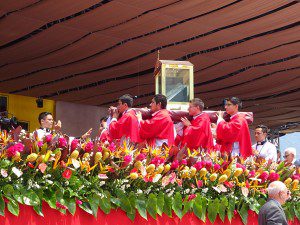
Pope Francis, as a fellow Latin American bishop, certainly gave Romero’s cause its last push so his beatification would become a reality.
During the times of Oscar Romero, Catholics gathering for a Bible study were considered subversive by the government since the catechists were teaching peasants how to read and write. Any criticism of the ruling party earned one a death sentence. In its attempt to fight communist guerrillas that were present in El Salvador, the government killed over 70,000 innocent civilians including hundreds of priests, sisters (including four American church women, three of them nuns) and thousands of catechists. The murder by right-wing government forces of his good friend Father Rutilio Grande marked an awakening in Archbishop Romero. The government’s unwillingness to investigate the murder caused Romero to speak against the injustices committed by the country’s rulers. His desire to uphold the equality of all before God regardless of social status was not appreciated by the powerful.

Romero spoke openly against the right-wing, US-supported government of El Salvador, which was actively persecuting the Church and killing thousands of innocent civilians. The day before he was martyred, he made an emotional plea to the men of the army, National Guard, police and military. During his Sunday homily at the cathedral he preached, “you are killing your own brother peasants when any human order to kill must be subordinate to the law of God which says, ‘thou shalt not kill.’ No soldier is obliged to obey an order contrary to the law of God…. It is time you… obeyed your consciences rather than a sinful order. The Church, the defender of the rights of God, of the law of God, of human dignity, of the person, cannot remain silent before such an abomination. In the name of God, in the name of this suffering people whose cries rise to heaven more loudly each day, I implore you, I beg you, I order you in the name of God: stop the repression.”
With these words Romero had crossed a line. For the government, he was calling for insubordination. For him, he was proclaiming the Gospel. In the same way Jesus Christ did not intend to enter politics but was executed with the political charge of “king of the Jews,” Archbishop Romero, who did not intend to enter politics, was accused of politicking while he was simply proclaiming the Gospel.
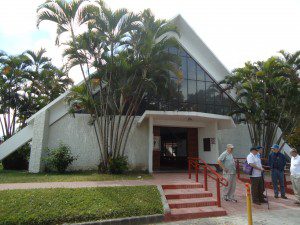
On March 24th, 1980, Archbishop Romero was celebrating a memorial Mass at the chapel of the hospital where he lived. After preaching, the archbishop moved towards the center of the sanctuary to prepare the altar. He no longer allowed others to assist him at the altar for fear of his future murderer accidentally shooting the wrong person. From the back seat of a car that had parked at the door of the church while the driver pretended to check on the tires, a sharpshooter shot Archbishop Romero right in the heart. He collapsed and died instantly. Women soaked up his blood with their veils and handkerchiefs.
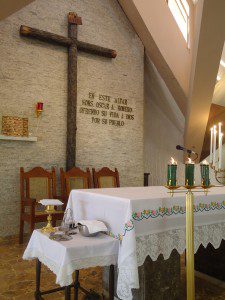
The archbishop’s vicar general, Monsignor Urioste, tells that Romero feared a violent death, yet he persevered preaching the Gospel in a country at war. He stood up against a government that oppressed its people and killed thousands of innocent civilians. Monsignor Urioste states that Archbishop Romero often said it was difficult to be a ‘man of the magisterium’ because it was not easy to be always consistent in the proclamation of the Gospel. Romero firmly believed he had to accept and live out the wholeness of the teachings of the Church, including standing up against oppression and injustice.
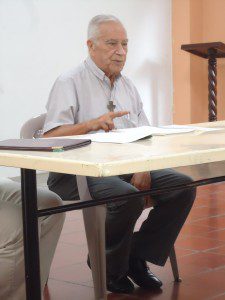
It was an honor to be part of a ceremony that recognized the courage of a man who admitted he was fearful of a violent death. Blessed Romero became a voice for the voiceless, and his words still echo throughout Latin America where millions still labor tirelessly to create a society where Gospel values are not only preached but lived. His witness is worthy to be imitated, especially by priests and all those who come face to face with oppression and injustice. Using the words of Saint John Paul II, Romero certainly “belongs to the Church,” and by beatifying him, the Church presents him as a model of Christian witness that loves like Jesus Christ, even to the point of death.
Pictures are mine, all rights reserved.





